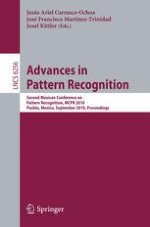2010 | Buch
Advances in Pattern Recognition
Second Mexican Conference on Pattern Recognition, MCPR 2010, Puebla, Mexico, September 27-29, 2010. Proceedings
herausgegeben von: José Francisco Martínez-Trinidad, Jesús Ariel Carrasco-Ochoa, Josef Kittler
Verlag: Springer Berlin Heidelberg
Buchreihe : Lecture Notes in Computer Science
